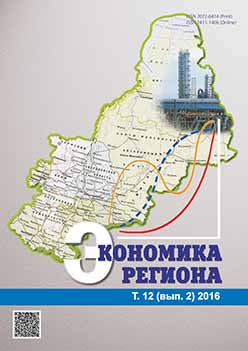Новые тенденции и формы эмиграции из России
Emigration from Russia: New Trends and Forms
Author(s): Vladimir Alekseyevich Iontsev, Sergey Vasilyevich Ryazantsev, Svetlana Vladimirovna IontsevaSubject(s): Economy
Published by: Институт экономики Уральского отделения Российской академии наук
Keywords: international migration; emigration; emigrants; brain drain; labor migration; human capital; legal regulation; migration policy; potential emigrant; intellectual migration;
Summary/Abstract: The subject-matter of this article is migration from Russia. The study deals with current aspects and new forms of emigration.The goal of this paper is to identify new patterns determining the emigration from Russia. The article views the emigration ina broad sense, including, in addition to classic emigration (i.e. leaving the home country for permanent residence in anothercountry), various categories of return migration (labor migration, shuttle traders, seasonal migration, episodic migration,economic tourism, business migration, education abroad, etc.). With the emergence of these new forms and categories, there isa need to clarify the migration concepts. This analysis is built on a broad historical perspective on emigration, which has been atypical phenomenon for Russia over the last three centuries. The article is based on such economic theories, as the human capitaltheory, new economic theory of migration, Todaro’s economic theory of migration and other. In this article, a variety of methodsare used, including historical analogy, statistical and mathematical approaches, sociological and econometric models. The articleanalyzes the patterns of modern emigration from Russia. It also considers certain aspects in the legal regulation of migrationprocesses, with a focus on emigrants, including potential emigrants. In conclusion, the article notes the need for the state controlof emigration processes. This means not so much the improvement of statistical records for this group of migrants, but ratherspecific government measures aimed at providing the state support to these categories of migrants in order to prevent the nonreturnmigration. In other words, it is not aimed at banning the emigration (a measure, the adverse effects of which were notedas long ago as by Mikhail Lomonosov), but at providing the state support to these categories of migrants in order to prevent thenon-return migration. The findings of this research can be used in improving the migration policy implemented, in particular, bythe Federal Migration Service of Russia
Journal: Экономика региона
- Issue Year: 12/2016
- Issue No: 2
- Page Range: 499-509
- Page Count: 11
- Language: Russian

